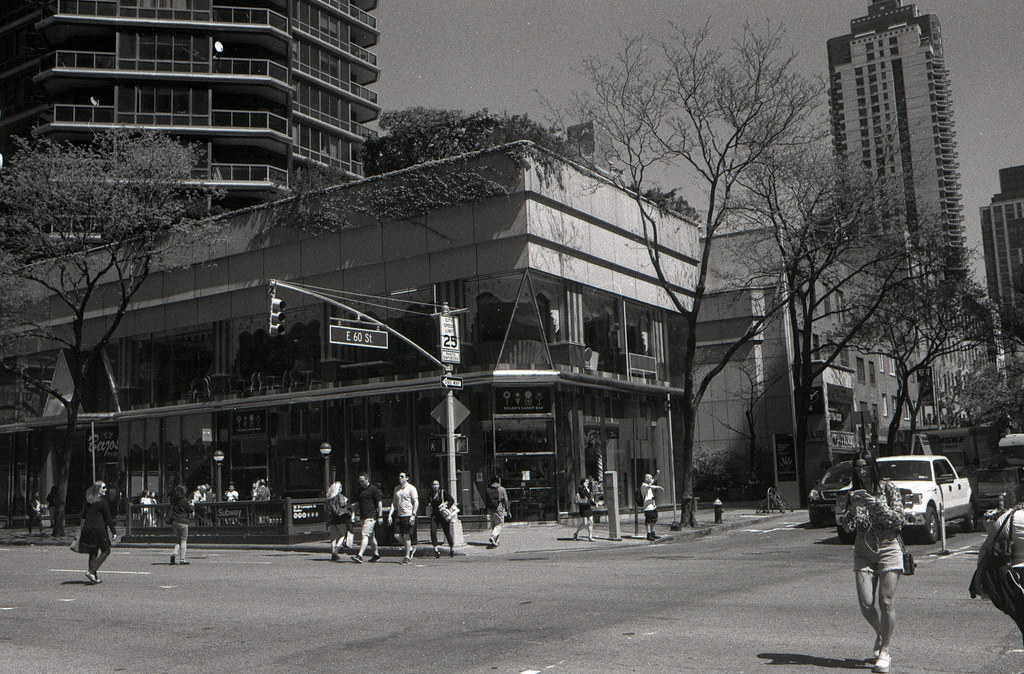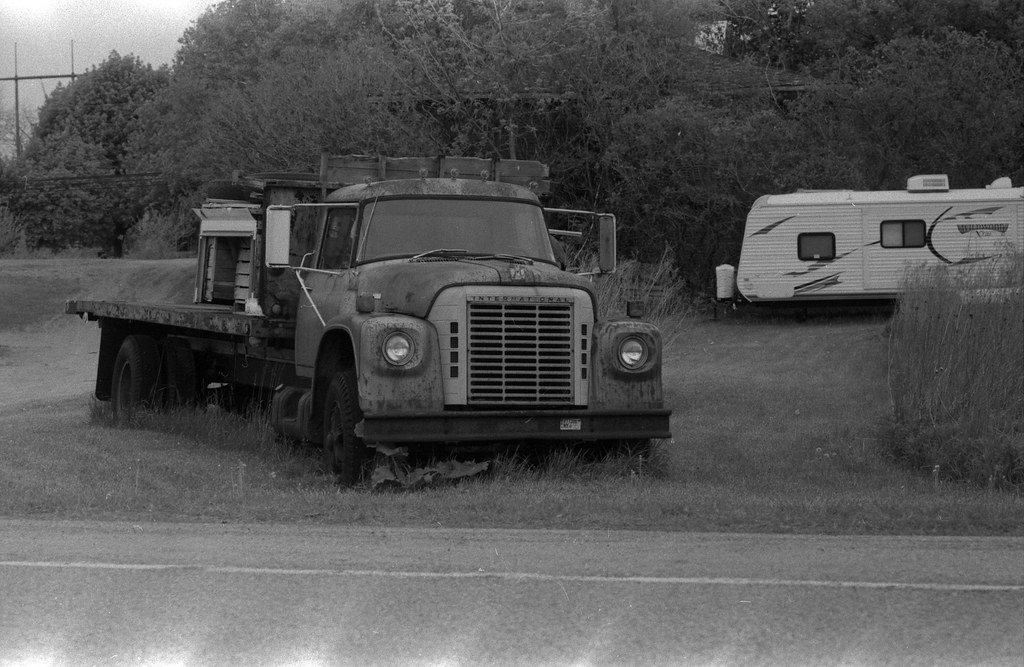When it comes to game-changing Nikon SLRs, the FA certainly is one of them, and one of a long line of game-changing cameras out of the company. For the FA the change came in the metering system. This was the first camera that featured full matrix metering out of AI and AI-S lenses and full program shooting. The camera accomplishes this by having a small built-in computer storage system that has a selection of scenes and compares the scene in front of the camera and picks the exposure based on one of the scenes in the memory. A smart trick, while not perfect, was the start of the fantastic meters that found their way into the Nikon F4 and Nikon F5. While short-lived, the legacy of the FA lives on even in today’s digital cameras.

The Dirt
Make: Nikon
Model: FA
Type: Single Lens Reflex
Format: 135 (35mm), 24x36mm
Lens: Interchangeable, Nikon F Mount
Year of Manufacture: 1983-1987


Background
In 1977 Nikon formed two special teams to research a high-speed shutter and an improved metering system that averaged a whole scene and presented full auto-exposure. These two systems were designed to go into their second models of the FE (Matrix) and FM (High-Speed Shutter). That’s right; the FA was a camera that was never supposed to happen. But to create a matrix metering system, the R&D team faced a daunting task as they were only working with a standard film frame and 1970s technology in electronics. The team did come up with a system using twenty-four silicon photodiode chips and arranged the frame into five different segments. But the real power behind the matrix system is a central computer chip, the Automatic multi-program chip or AMP Chip. The chip analysed the scene as read by the diodes, compared it to similar scenes stored in memory and set the exposure. I’m not sure when Nikon decided to take both the high-speed shutter and the AMP system and put it into a single camera, but when 1983 came around Nikon released three new cameras, the FM2, the FE2, and the FA. The FA would be Nikon’s answer to the Canon A-1 and Olympus OM-4. Much of the design cues for the FA came from the previous year’s Nikon FG; the FA had a far shallower prism and the addition of a plastic grip on the side. And while it was released three years after, imagine if Nikon had waited on the F3 and released it with the 1/4000″ high-speed vertical travel titanium shutter and the AMP system in place? But Nikon didn’t stop there, the FA worked perfectly with the older MD-11 drive and the MD-12 released with the FE2/FM2, but they produced a drive specifically for the FA, the MD-15. What set the MD-15 apart is that is could also power the camera from the AA batteries in the drive. The FA sales skyrocketed coming in a close second to the F3 even with the higher price point. However, the camera’s main selling feature became its greatest weakness. The AMP system provided a complex system to build, and supply could not keep up with the demand. In some cases the electronics tended to fail, earning the camera a sour reputation. It would be that reputation and the introduction of commercially successful auto-focus in the Minolta Maxxum 7000 in 1985 eventually ended the FA in 1987. Although new stock continued to be available until 1989.


Impressions
When it comes to compact SLRs, the Nikon FA certainly cuts a fine figure. The silver/black finish gives it that classic look and the squat prism makes this Nikon not look like your typical Nikon. The camera is light for the number of electronics loaded inside. Despite this change, the control layout is very similar to other Nikons such as the FE and FM2n, the shutter speed dial is easily located and can be freely adjusted. Near the dial is the PSAM switch, and while the switch is a little difficult to manipulate but after a couple of years I’m very comfortable with the knob. The shutter button is smooth, and the film advance lever which doubles as the on/off switch with the standard half-pull to turn the camera on when not equipped with the MD-15 drive. The throw is short, so operating is quick even without a drive. But honestly, it was after getting an MD-15 drive that made the camera even better. It added the ability to power the camera with AA batteries and gave automatic film advance plus gave the camera a far better balance with the longer lenses but didn’t throw it off with shorter lenses.


Experience
The Nikon FA is a joy to operate, even with the heavy MD-15 on the right strap; the camera is lightweight and can be used all day without any difficulty. And without the drive, the camera is even smaller and far more compact if space is at a premium. The camera’s viewfinder is bright, with easy to read displays for aperture and shutter speed and the display changes depending on the mode. In full program and aperture priority mode, the LCD screen displays the shutter speed. And in manual there’s small +/- display and correct exposure determined when both are shown. The aperture is displayed off the lens directly using the small window like contemporary Nikon cameras. In shutter priority mode the LCDs the aperture and a mechanical display are used for the set shutter speed. And the split prism makes manual focus a breeze. Since this is the first camera to use matrix metering and with a fixed set of scenes stored in memory, the matrix system is easily confused when using the camera in portrait orientation. That said when the meter gets the right exposure, it is dead on target.


Optics
Nikon continued to use their F-Mount which gives the camera access to a great number of amazing lenses. That said, the Nikon FA was designed to operate with the AI, AI-S, and AI-Modified lenses and that gives you full access even to the program mode because the aperture is read mechanically using a pin and a lug. However, the camera could no longer support pre-ai lenses; these lenses won’t even mount and could potentially damage the camera. And while these days manual focus Nikon glass can pull premium costs on the used market, there’s also the Series E lenses which are no slouch either and a more budget-friendly choice.


Lowdown
When I first shot the Nikon FA, I found I liked the camera but realised I needed another Nikon SLR like I needed a hole in the head. Eventually, when I ditched the Nikon F3, I picked up that same Nikon FA from John Meadows. Honestly, I think that Nikon should have waited on the F3 and put their matrix system into that pro body and that high-speed shutter and produced an amazing professional camera. However, the effects of the FA still being felt today, Matrix metering had been a standard in most Nikon cameras since the FA, and while the system has improved from those first steps, it is an industry standard today. The camera is fairly inexpensive on the used market a body can be had for under 100$ and the MD-15 for around 35$, and if you have the lenses already, you have a solid travel kit. However, these are electronic cameras going on 30 years old now and could fail at any moment, and while I’m sure, a trained person could do a repair you’d need a donor camera to supply the electronic parts. But if you do have a working camera, you have in my view one of the best cameras from Nikon.
Further Reading
Don’t just take my word on the Nikon FA, check out these other awesome camera reviewer’s thoughts on the camera.
Down the Road – Nikon FA Review
Mike Eckman Dot Com – Nikon FA Review
Casual Photophile – Remember the 80s Camera Edition
Japan Camera Hunter Camera Geekery: The Grand Prix Edition Nikon FA
Classic Camera Revival Ep. 16 Let’s all Shoot One Camera
5 Comments